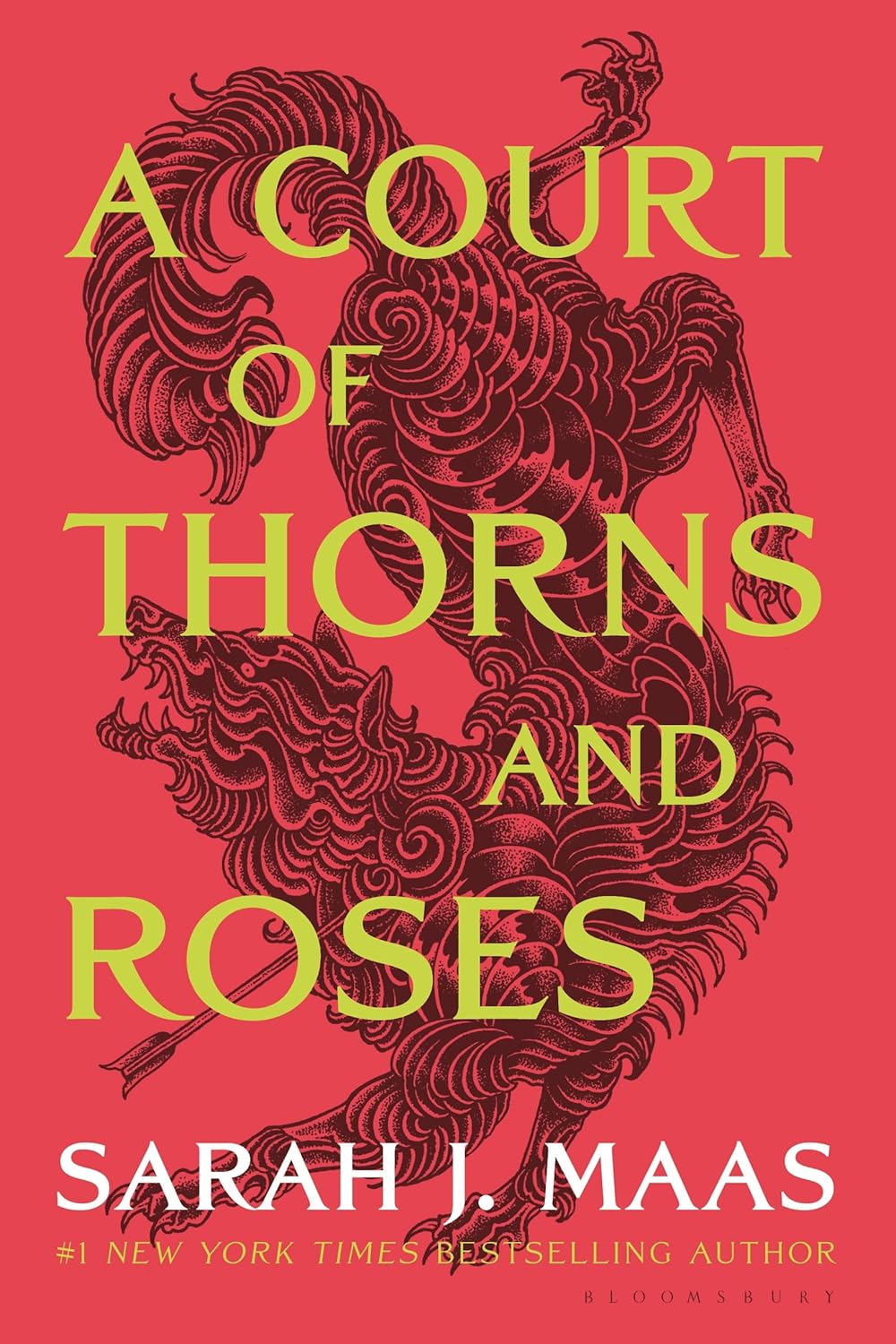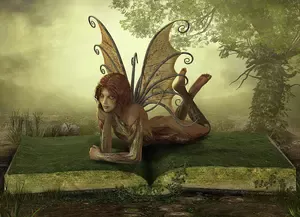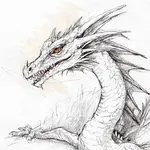- Home
- Fairy Blog
- Fairy Cakes
- Fairy Quotes
- Safety Dance
- The Flower Fairies Books
- What is a Fairy?
- Are Fairies Real?
- Elemental Fairies
- Faeries
- What are the Fae?
- Fae Fantasy Books
- Fairy History
- Origin of Fairies
- Fairies in Folklore
- Pixies
- Pixie Fairy Differences
- Gothic Fairies
- Tooth Fairy
- Fairy Festivals
- Fairy Gardens
- Fairy Garden Accessories
- Fairy Forests
- Fairy Poems
- Fairy Tales
- Fairy Tale Origins
- Classic Fairy Tales
- 24 Fairy Tales
- Fairy Tales around the World
- About Fantasy Creatures
- Dragons
- Dwarves
- Elves
- Gnomes
- Leprechauns
- Mermaids
- Unicorns
- Fairy Face Painting
- Free Fairy Art
- Fairy Coloring Pages
- Fairy Crafts For Kids
- Chinese Dragon Art
- How to Draw a Dragon
- Chinese Dragon Drawing
- Dragon Coloring Pages
- Fairy Tattoo Ideas
- About Us
- Contact Us
- Disclaimer
- Privacy Policy
Chinese Dragons
Chinese dragons, or "lóng" (龙), are powerful and enigmatic mythical creatures that hold a prominent place in Chinese culture, history, and mythology.
Revered as symbols of wisdom, strength, and prosperity, these majestic beings are intrinsically linked to the elements, particularly water, and are believed to control natural phenomena such as rain, floods, and storms. In contrast to their Western counterparts, Chinese dragons are typically portrayed as benevolent, auspicious, and wise, embodying the harmonious balance of the natural world.
With a rich history dating back to the Neolithic period, Chinese dragons feature an intricate blend of animal characteristics, such as the scales of a fish, the horns of a stag, and the serpentine body of a snake.
Throughout the ages, these mythical creatures have been associated with imperial power, with emperors often referred to as the "Son of the Dragon." Chinese dragons also play an integral role in various festivals and celebrations, such as the Dragon Boat Festival and the Chinese New Year, where dragon dances bring good fortune and ward off evil spirits.
Embark on a fascinating journey into the world of Chinese dragons, as we explore their history, cultural significance, and the various types of dragons that feature in Chinese mythology. Discover the enduring influence of these captivating creatures on Chinese art, architecture, and popular culture, and learn how they continue to shape China's cultural heritage today.
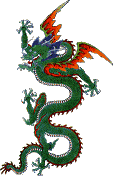
Amazon Audible Promo
With Amazon Audible’s holiday promo ($0.99/month for 3 months) and the release of Harry Potter: The Full-Cast Audio Editions, there's never been a better time to join.
Chinese Dragons
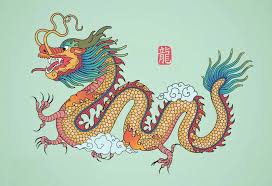
Chinese Dragons are deeply rooted in Chinese history, dating back to the Neolithic period, with dragon motifs appearing on artifacts and pottery from that time. Ancient Chinese Dragons show up in literature, the arts, architecture, poetry and many other places in Chinese culture.
They are a symbol in the pagan religions. They posses great magical powers. Distinct from their Western counterparts, Chinese dragons are usually depicted as benevolent, wise, and powerful beings that are associated with natural elements, particularly water.
Key features of Chinese dragons
- Appearance: Chinese dragons typically have long, serpentine bodies and lack wings, unlike their European counterparts. They possess four legs, with each foot having four or five claws. Their bodies combine various animal features, such as the scales of a fish, the horns of a stag, the belly of a snake, and the face of a camel.
- Elemental associations: In Chinese culture, dragons are often linked to water, controlling rain, floods, and storms. They are also associated with bodies of water, such as rivers, lakes, and seas. Consequently, they were revered as symbols of fertility and abundance, as well as natural forces that could both nourish and destroy.
- Imperial symbolism: The dragon has long been a symbol of imperial authority and power in China. Emperors were often referred to as the "Son of the Dragon" and used dragon imagery on their robes, thrones, and other items associated with the imperial court. The dragon's association with power, wisdom, and prosperity made it a fitting symbol for the ruling class.
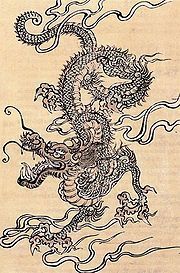
- Types of dragons: There are several types of dragons in Chinese mythology, each with its unique features and associations. Some examples include the Celestial Dragon (Tianlong), which guards the heavenly palaces; the Earth Dragon (Dilong), which controls rivers and waterways; and the Treasure Dragon (Fucanglong), which guards buried treasures.
- Festivals and celebrations: Chinese dragons are an essential part of various festivals and celebrations. The most notable example is the Dragon Boat Festival (Duanwu Festival), where dragon boat races are held to commemorate the ancient poet and statesman Qu Yuan. Another example is the Chinese New Year, during which dragon dance performances are held to bring good fortune and ward off evil spirits.
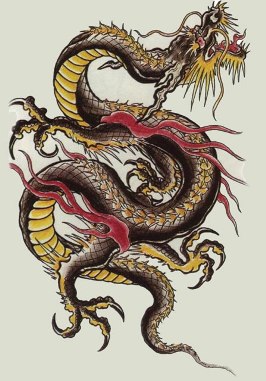
Dragon images are worshiped and treated with a great respect. They are shown on all types of Chinese art objects. These feelings about these dragon images are very old and date back to around 618AD.
Here are some examples of Chinese dragons along with their descriptions:
- The Lung dragon, in Chinese mythology, is one of four main animal figures that were seen to be or rather believed to be well-meaning or were symbols of good luck. Of these the dragon, probably because of its obviously powerful image, became a symbol of the Chinese emperor.
- Celestial Dragon (Tianlong): Tianlong are heavenly dragons that protect the celestial palaces and pull the gods' chariots. They are symbols of the divine and are closely associated with the heavens.
- Tianlong are heavenly dragons that protect the celestial palaces and pull the gods' chariots. They are symbols of the divine and are closely associated with the heavens.
- Earth Dragon (Dilong): These dragons reside within the earth and control the waterways. Dilong are connected to rivers, lakes, and seas, and are responsible for shaping the landscape.
- Spiritual Dragon (Shenlong): Shenlong, also known as the "Thunder Dragon," are in charge of weather phenomena like rain, wind, and storms. They are depicted with a large pearl under their chin, symbolizing the thunderbolts they can unleash.
- Imperial Dragon (Yuzhilong): Yuzhilong are dragons associated with the emperor and the imperial family. They symbolize power, authority, and divine right, and are often portrayed with five claws, as opposed to the four claws typically found on other Chinese dragons.
These Chinese dragons illustrate the rich diversity and symbolism found in Chinese folklore and mythology.
Chinese dragons have a rich history and cultural importance that extends beyond mythology. They continue to play a vital role in Chinese art, architecture, and popular culture today. As symbols of wisdom, power, and natural forces, they remain an enduring and iconic aspect of China's cultural heritage.
You can read more about dragons here.
You may be interested in reading about Japanese dragons here.
Book of the Month
The Best Selling Fae Fantasy Book! A great Christmas gift!
CLICK HERE for more information and best price!
Recent Articles
-
Fae Fantasy Books - where love can be both thrilling and terrifying!
Nov 22, 25 02:34 AM
Fae Fantasy Books - explore new aspects of what it means to be human in a world where magic and immortal beings exist! A perfect blend of danger and allure! -
Water Fairies: Meet the Mystical Undines of the Waters
Nov 19, 25 02:45 AM
Water fairies, often called undines, are enchanting magical beings deeply connected to the element of water. These spirits appear in folklore and fairy tales -
Earth fairies are elemental beings connected to the earth element.
Nov 19, 25 02:34 AM
Earth fairies, also known as gnomes, are elemental beings deeply connected to the earth element. They have rich roots in folklore, mythology, and fairy tales

